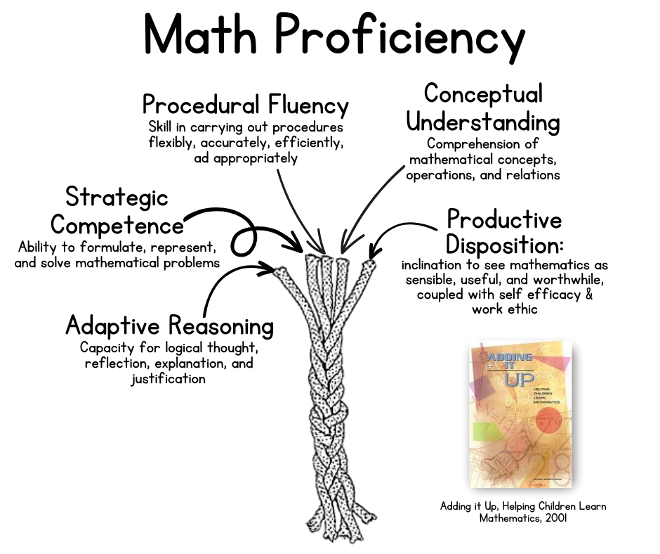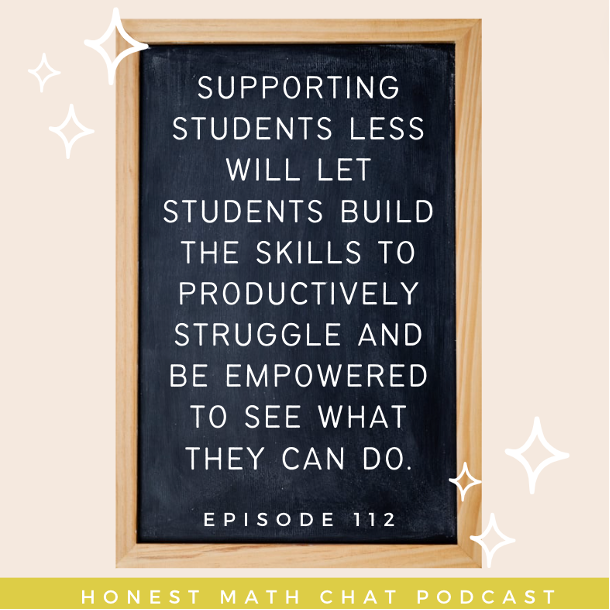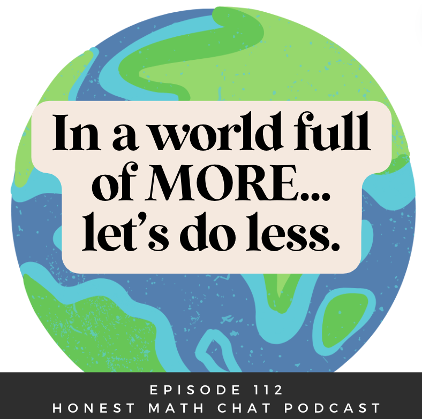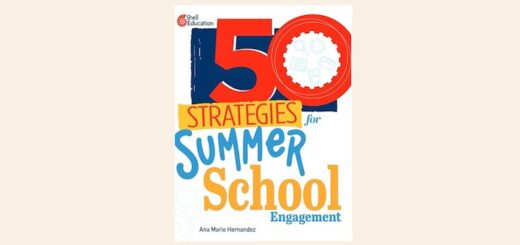Do Less This Year to Let Kids Do More in Math
By Mona Iehl
 In a world that demands more, more, more… I want to do less! Don’t you?
In a world that demands more, more, more… I want to do less! Don’t you?
This school year I’m committing to do less so that my students can do more. More thinking, more problem solving, more growing. Because, as busy teachers with demands and to-do lists mounting, it’s time we prioritize what matters most.
I have committed to creating a classroom space that empowers students to take the lead of their learning and giving them space to figure things out. I know that when students experience math hands-on and discuss it with peers, their learning leads to proficiency vs. memorization and replication. So this year I’m using my time to make the greatest impact on my students learning… by doing less so they can do more.
Here is a simple list of the 3 things to do LESS of to help your students do more:
- Talk less.
- Do less.
- Support less.
Now you might be thinking… “That sounds good, Mona, but there is NO way that will work.” You might be thinking, “How will talking, doing, and supporting less let my students lead?”
Let’s break down how doing less will empower your students to take the lead in math class.
1. Talk Less
You talking less will give students more time to talk.
Think about it… If you are the one doing most of the talking and explaining in math class, then students are (hopefully) sitting and listening, and maybe they are thinking about what you’re saying. There is NO guarantee that students are learning. However, research supports that if students are talking, then they are engaged in sense making and achievement increases.
“In the ideal discussion-based classroom community, students have the right to speak and the obligation to explicate their reasoning, providing warranted evidence for their claims so that others can understand and critique their arguments. The classroom culture assumes that all students have equal access to the floor and to the academic content, and that all students have comparable discourse experience to make their voices heard and recognized as offering reasoned and cogent contributions. Indeed the ‘‘rules of the game’’ in this idealized classroom community look strikingly similar to the norms of discourse called for in theories of deliberative democracy.”
– Michaels, O’Connor, Resnick. Deliberative Discourse Idealized and Realized: Accountable Talk in the Classroom and in Civic Life, 2007.
So, as you give students opportunities to explain their thinking, you’ll allow them to develop not only math proficiency, but the skills needed to actively participate in discourse in society.
2. Do Less
Ask students to do fewer problems. Students can then focus their effort on one or two. Slowing down and really digging in will allow students the time to develop their conceptual understanding and think deeply.
Do you remember the 5 Strands of Mathematical Proficiency?
Each of the 5 strands is interwoven and developed alongside the others. The best way to do that is through rich math tasks that ask students to practice these skills simultaneously. Rich math tasks make time to allow students to dive in, make sense of, and problem solve.
When you commit to using rich tasks, you’ll need to do fewer tasks. You’ll notice that procedural fluency is something that might require more practice, and practice is not a bad thing… but doing fewer problems that are richer will result in more opportunities to dive deeper and develop math proficiency that lasts.
3. Support Less
Supporting students less will let students build the skills to productively struggle and be empowered to see what they CAN do independently. This is both math mindset related and math proficiency related. When students see that they CAN do hard things in math, they are more willing to engage and participate and in turn build their math mindset. Students are more willing to do complex work when they find confidence in their successes.
Then as students engage, they will develop more mathematical proficiency. Students cannot learn math deeply if they don’t engage in the problem solving which requires productive struggle.
It is more uncomfortable for us to watch students struggle than it is for students to struggle. I truly believe that kids are not afraid of minor failures or being off track. In fact, our students have been learning through struggle and failure since birth. However, too often during math class the emphasis is on being correct quickly, and students are trained to shut down if they can’t meet that unrealistic, unwritten expectation.
Our students have NEVER been ruined for life by spending a few minutes working through something that has completely confused them. However, your teacher heart tells you to save them in those tough moments of struggle, doesn’t it? Mine does! We’re pulled to guide them, show them what to do to get on the right track. But the truth is… that’s just telling them what to do, and it takes away their opportunity to truly learn to problem solve, which is learning to do math.
But you might be thinking, “But don’t students need to know WHAT to do? If I don’t show them, will they ever know?”
Let me be clear, I DON’T think that you should NEVER tell students what to do. But I think students need adequate time to explore tasks that are selected strategically to move them toward the math goals.
For example, if you want students to build an understanding of adding fractions, then they need multiple problems over several days to build their understanding of fractions using manipulatives and visual representations, time to talk to their peers and hear their reasoning, time to make conjectures about the patterns they observe and truths they see emerging. Then it is appropriate to say “okay, friends, let’s pause the conversation here at talk about some fraction truths. This is called a fraction bar, this is the numerator. What does that tell us?” etc.
So, Let’s Do Less, Shall We?
We can empower our math students by doing less – by allowing them to take the lead in thinking, talking, and solving.
So, let me know what you are willing to do less of this school year to help your students take the lead in their math learning.
Mona Iehl (@HelloMonaMath) is a teacher and coach in Chicago, Illinois. She begain her 17-year career in the primary grades but found her passion in the middle grades. This year Mona has taken on the role of supporting math learning as an instructional coach. For more details about the teaching methods and support Mona offers, visit her website and browse her other MiddleWeb posts.
As a former math avoider, Mona is passionate about helping every teacher and student find their inner mathematician through episodes of her podcast. Listen at @HonestMathChat. If you’re looking for resources for math tasks, word problems, math community and fluency visit Mona’s TPT shop.






































